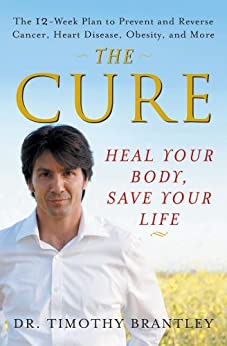Laurie Kelley
January 12, 2009
I read a great article today in the Columbia Tribune about step therapy… an insurance cost cutting measure, meant for the common good, but which has caused great concern in the hemophilia community. So far it has been attempted in the hemophilia community, but our advocates have fought and won protection against this. Read on… (edited)
Who’s the Doctor?
Insurers reject prescriptions to save money.
Published Sunday, January 11, 2009
http://www.columbiatribune.com/2009/Jan/20090111Feat002.asp
Two years ago, Tracey Joyce of Webb City showed up at her local pharmacy expecting to get a refill for an anti-arthritis medication. She’d been taking the drug, Celebrex, since she had a shoulder surgery two years earlier and says it made her pain manageable.
But at the pharmacy counter she got a surprise.
“They told me, ‘Express Scripts has said they won’t pay to fill this,’ ” Joyce recalled. “‘They want you to do a step program.’ “
Joyce was referring to Express Scripts, the St. Louis-based pharmacy benefit management (PBM) company that administers prescription benefits for more than 50 million people nationwide. The company is contracted through Joyce’s insurer, Mercy Health Plans, and is paid to lower drug costs.
Sometimes this means asking patients to try generic drugs instead of name-brand drugs and at other times to try alternative medications or alternative treatments for their illnesses. This is commonly called “step therapy” or the “fail first” approach.
Joyce, though, didn’t want to fail first. She had been prescribed Celebrex in part because she has a history of ulcers, and the medication doesn’t damage the stomach lining. She and her doctor agreed she needed that drug and that drug only. But the step therapy required that she try three months of Advil, Aleve or Naproxen before Express Scripts would authorize payment for Celebrex.
Joyce said she had no choice but to try the step therapy because of costs. After three months of taking the alternatives, she was “allowed” by the PBM to go back on Celebrex. But something still didn’t feel right, she said.
Soon afterward, chest pains sent her to the emergency room, and doctors discovered she had six ulcers. Her primary-care physician, Andrew Roudebush, blamed the step therapy drugs, which, he said, can actually harm the stomach lining and make ulcers worse.
Above, Tracey Joyce battled with her health insurance company after a pharmacy benefit management company changed her medication to a lower-cost drug. Below, Andrew Roudebush, Joyce’s personal care physician, believes the changes worsened Joyce’s ulcers.
“My view is they’re practicing medicine without a license,” Roudebush said of the way the PBM intervened in the doctor-patient relationship.
Joyce said the decision ultimately cost her insurer more money than the drug ever would have. “I ended up with a $14,000 hospital overnight stay because they wouldn’t pay for the $100 bottle of pills.”
“It’s been an issue with a lot of people, and it seems to be getting progressively worse,” Nold said. “In general terms, this is what happens all day long.” Unlike most other patients, Joyce was in a position to do something about this problem. She works as the legislative assistant to state Rep. Bryan Stevenson, R-Webb City, and she asked her boss to change the law.
“My thing is right is right, and wrong is wrong,” Joyce said. “Doctors went to medical school, doctors did all the training and they have to keep a license. Let’s let them practice medicine instead of the clerks that are on the other end of the 1-800 line.”
Only a doctor can write a prescription, but doctors say insurance companies are second-guessing their decisions.
MANAGING DRUG COSTS
Step therapy grew in popularity earlier this decade as costs of pharmaceuticals skyrocketed. Express Scripts, for example, said the use of step therapy among its members grew from 4.5 million at the end of 2002 to 11.7 million in 2004.
The company touts the savings of the programs. A 2004 study by the American Journal of Managed Care indicated implementing step therapy programs for three main drug classes–drugs used to treat ulcers, depression and arthritis, respectively — reduced total costs for those classes by 38 percent during a two-year period.
Express Scripts labels drugs as “front-line” and “back-up” drugs for certain chronic conditions like high blood pressure and arthritis. Front-line drugs are typically cheaper generics, and back-up drugs are the name-brand versions.
“Step therapy programs are only developed in therapy classes where the generic and brand-name options are considered highly interchangeable,” Palumbo said. This is “based on clinical practice guidelines, primary literature and/or feedback from practicing physicians.”
Palumbo added that in “rare instances” where it’s necessary, the company has an exceptions process that allows doctors to override the PBM step therapy. But for physicians like Roudebush, the exceptions process is frustrating. Roudebush said he has had little luck with the override option and has found the back and forth wrangling with PBM clerks and nurses takes several days and usually ends with a “no” from the PBM.
Step therapy, he said, is often not a choice between two equal options. “They’re just making a financial decision, which I respect, but I don’t feel like I frivolously prescribe medicines that are the most expensive,” he said. “I think I use what’s best for the patient.”
Nold agreed. He said he regularly has to give his patients repeated, medically unnecessary endoscopic procedures simply to “prove” to insurance companies they need stronger medication. “They’ll end up coming back to get another scope just to prove” the drugs are “not adequate, and that’s sad,” he said.
ANGRY PATIENTS
During the last legislative session, Joyce was among several people pushing for PBM reform. The language to regulate the practice was eventually written into legislation, House Bill 1332.
Among other things, the bill would have given physicians the power to override step therapy decisions when treatment is expected to be ineffective. It also caps the time limit on step therapies at 14 days.
The House and Senate overwhelmingly passed similar, but not identical, versions of the bill. The session ended before the differences in the two versions could be reconciled. Joyce said Stevenson was at work on a new PBM oversight bill last week and that he planned to submit it soon.
Keele testified before a state Senate committee in support of HB 1332 last year.
Joyce said she will continue to strongly advocate for the legislation until it passes. It has become her cause, and she has been getting thumbs-up from people everywhere she goes.
“You’ve got people with business degrees telling people with medical degrees what to prescribe,” he said. “Did you go to business school to know which stomach medicine is best for me? I don’t think so.”
Reach T.J. Greaney at (573) 815-1719 or tjgreaney@columbiatribune.com.
——————————-
Read carefully. Step therapy assumes that two drugs are interchangeable, so the question begged is this: are factor VIII drugs interchangeable? Can an insurance company switch your factor brand to another to save on expenses? That’s what some have tried to do, and most like will try to do. Stay tuned… and watch your step.











